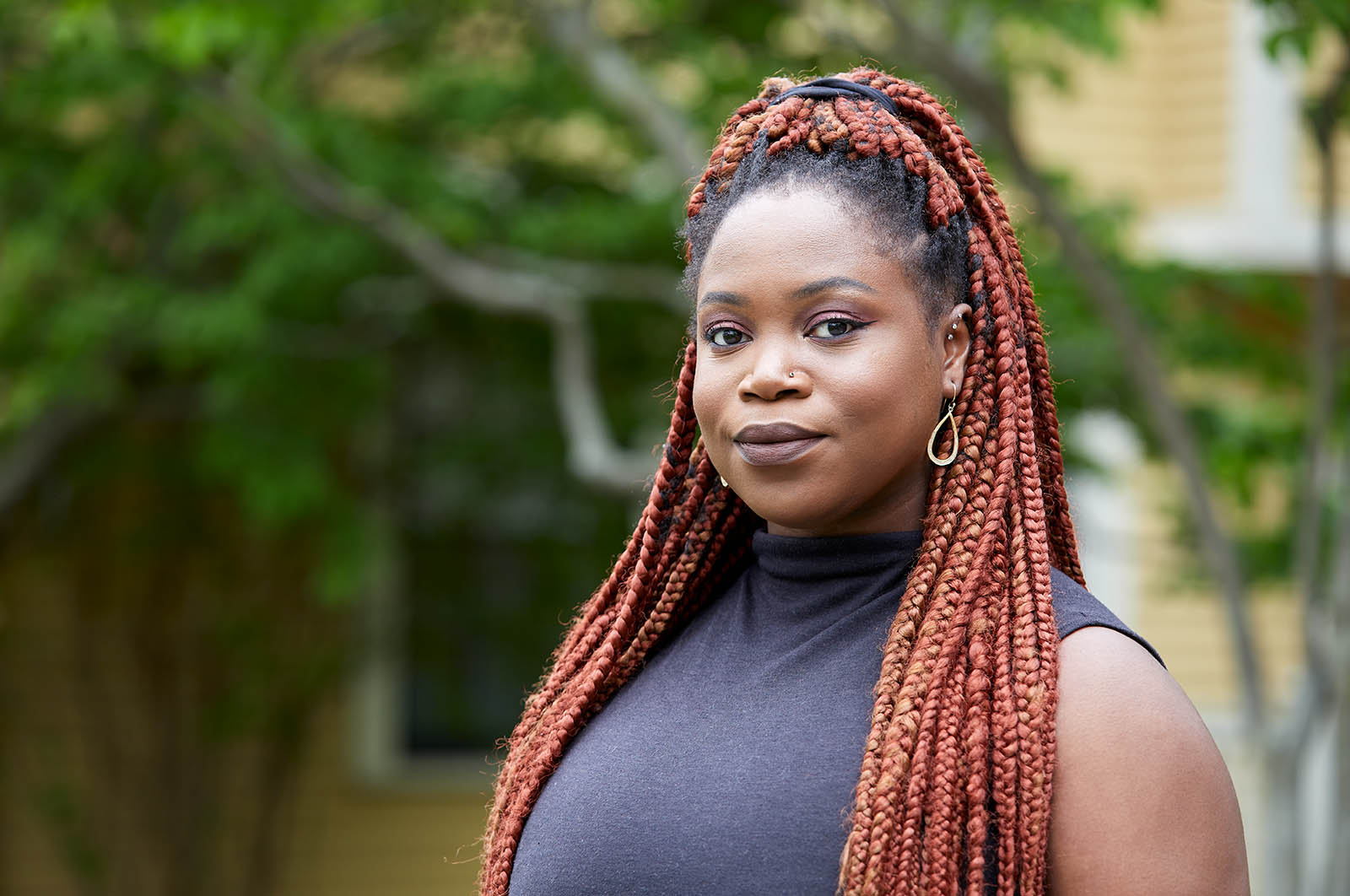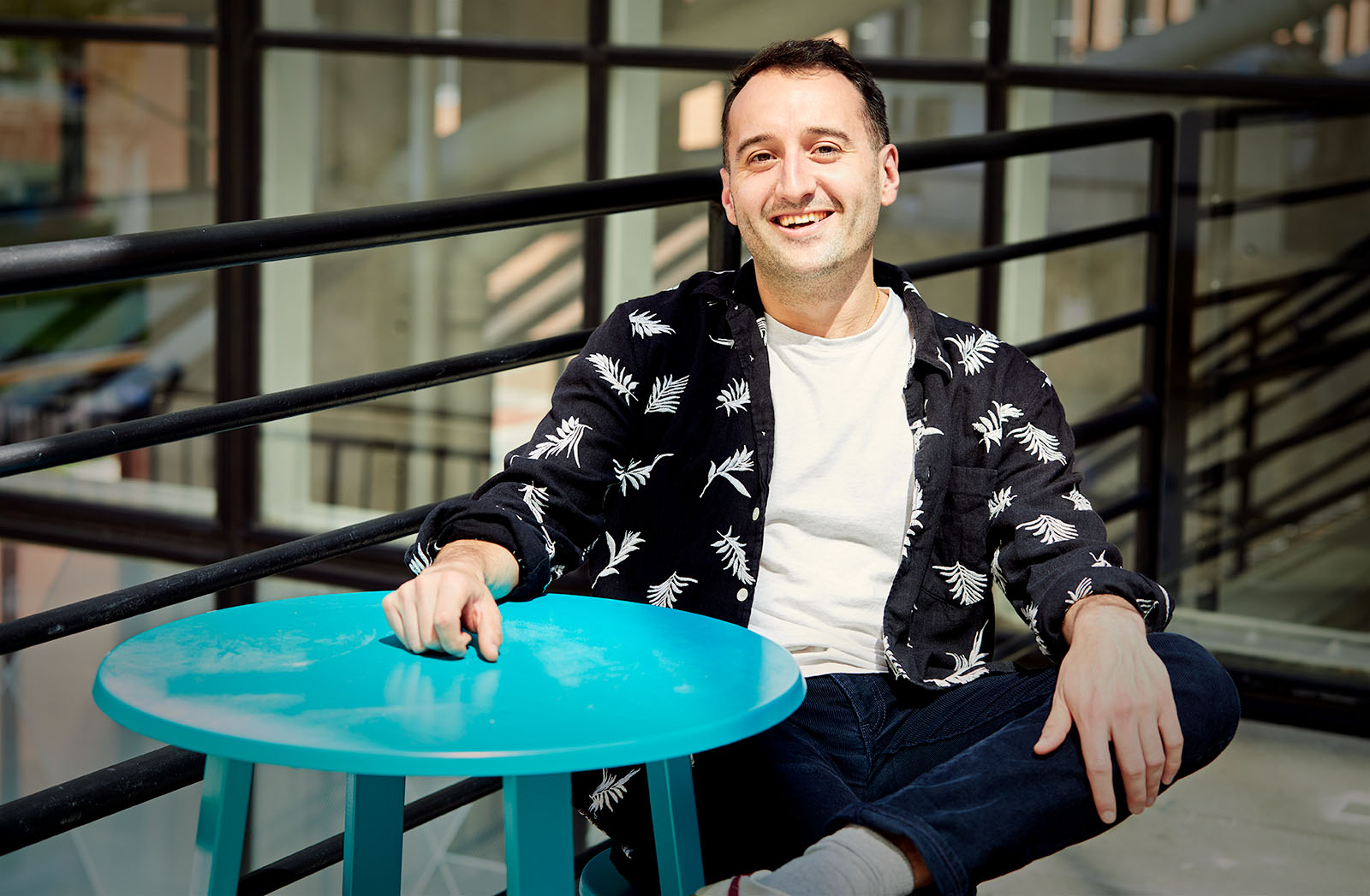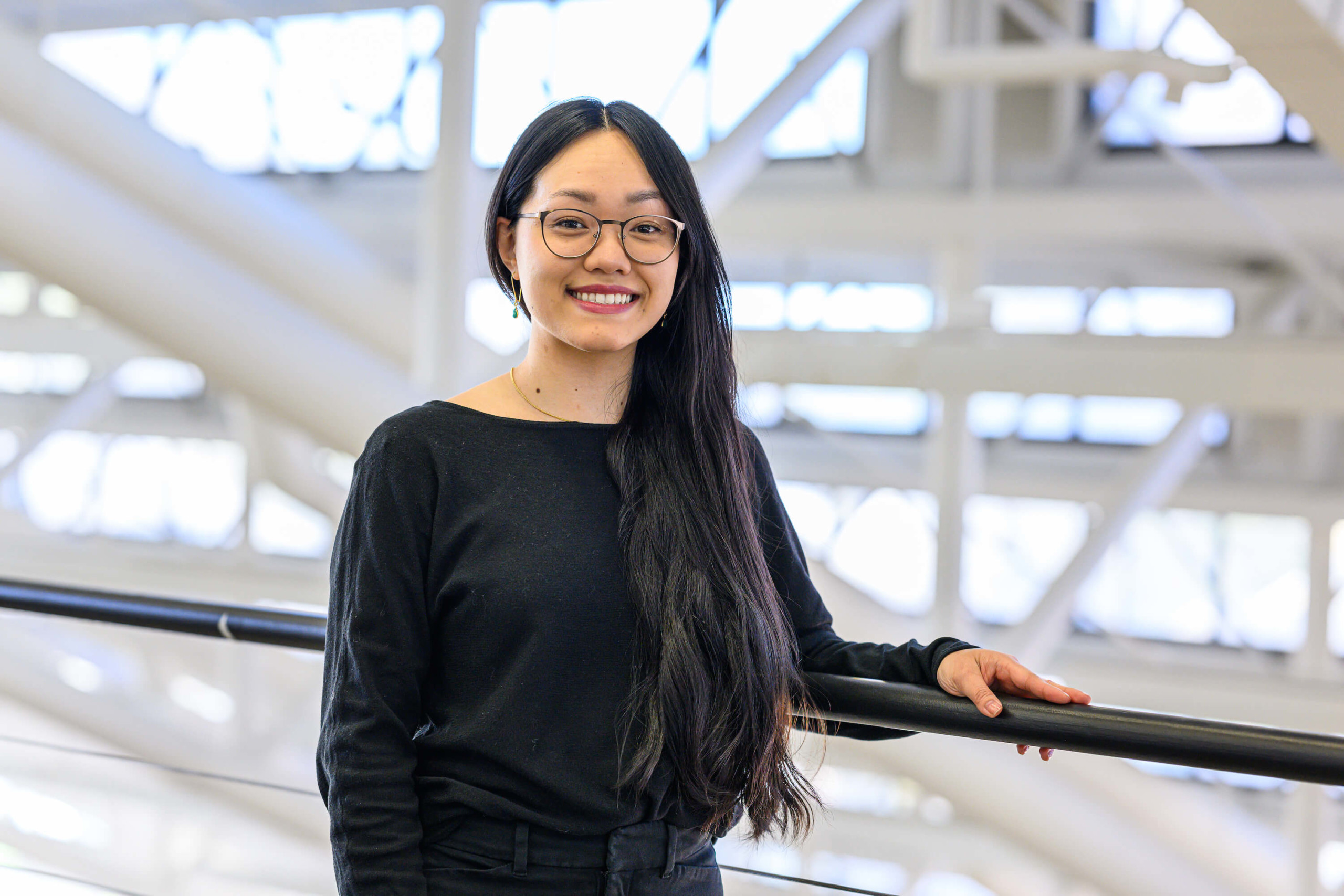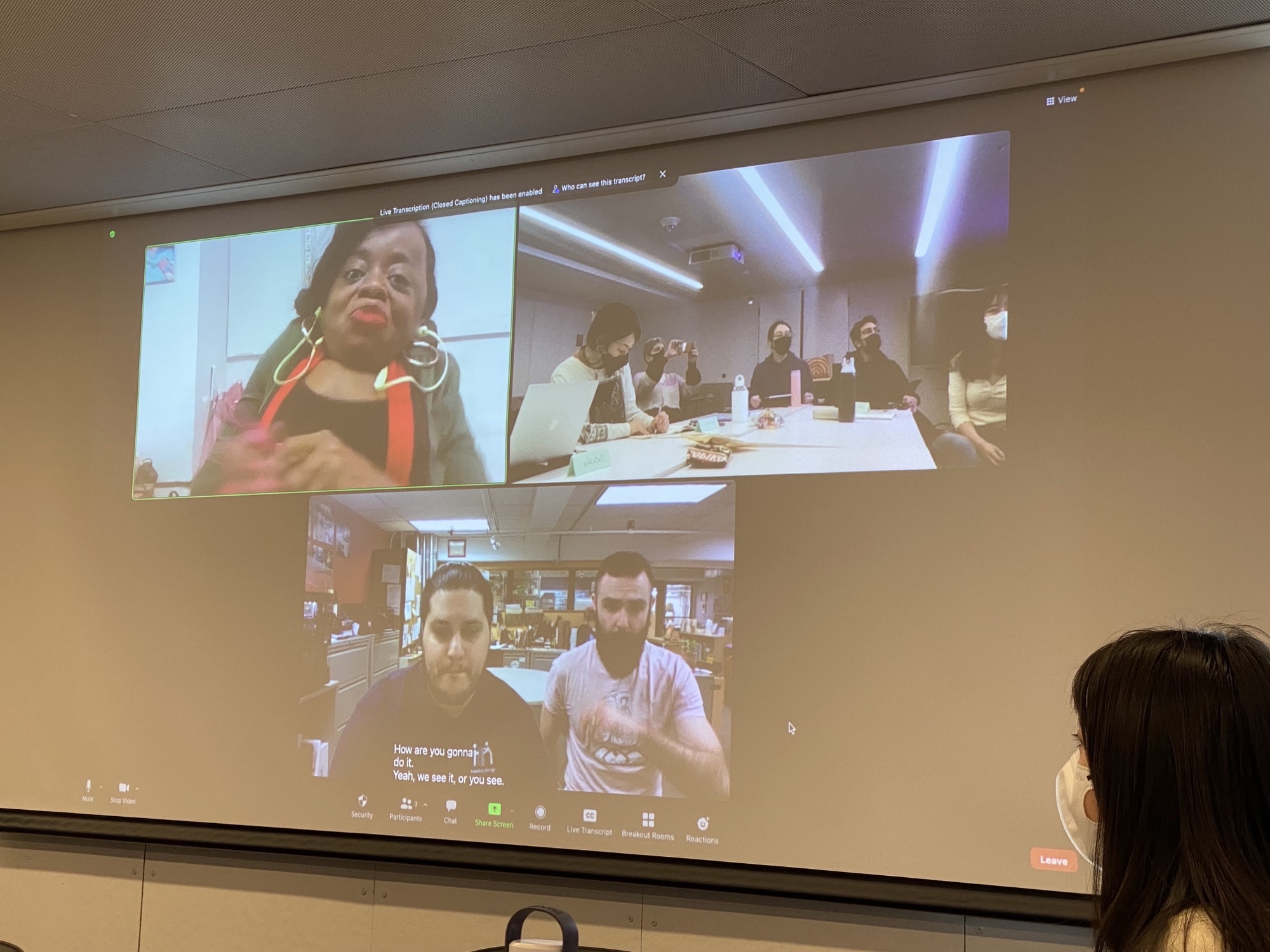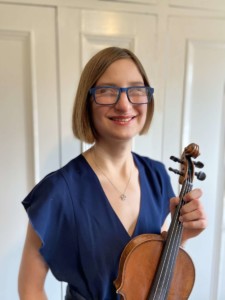Harvard Graduate School of Design shortlists four architects for 2022 Wheelwright Prize
Harvard Graduate School of Design (Harvard GSD) has announced four shortlisted architects for the 2022 Wheelwright Prize. Now in its 10th cycle, the Wheelwright Prize supports innovative design research, crossing both cultural and architectural boundaries, with a $100,000 grant intended to support two years of study. Previous winners have presented diverse research proposals, including studies of kitchen typologies around the world; the architecture and culture of greenhouses; the potential of seaweed, shellfish, and the intertidal zone to advance architectural knowledge and material futures; and how spaces have been transformed through the material contributions of the African Diaspora. The 2022 Wheelwright Prize drew a wide international pool of applicants. A first-phase jury deliberation was conducted in April; a winner will be announced in June. Jurors for the 2022 prize include: Will Hunter, 2022 Harvard GSD Loeb Fellow and founder and chief executive of London School of Architecture; Adrian Lahoud, dean of the School of Architecture at the Royal College of Art; Mark Lee, chair of the Department of Architecture at the Harvard GSD; Irene Sunwoo, John H. Bryan Chair and Curator, Architecture and Design at the Art Institute of Chicago; Shirley Surya, curator of design and architecture at M+; and Sarah M. Whiting, dean and Josep Lluís Sert Professor of Architecture at the Harvard GSD.The four finalists for the 2022 Wheelwright Prize, and their proposals, are:
Curry J. Hackett: “Drylongso: Sociospatial Tropes of the African Diaspora”
Curry J. Hackett is a lecturer and adjunct assistant professor at the School of Architecture at the University of Tennessee, Knoxville, and core organizer of the anti-racist design justice school, Dark Matter University. His practice, Wayside Studio, primarily based in Washington, DC, collaborates with communities and organizations to engage in matters pertaining to culture, infrastructure, ecology, and the public realm. Hackett earned a BArch from Howard University in 2013. Noteworthy work includes Howard Theatre Walk of Fame, Swept Yard, King Park, the DC High Water Mark system, and DC Clean Rivers Project. Through his research, Hackett explores the relationships between Blackness and land, particularly in the culturally hybridized region of the American Atlantic and Gulf Coasts. Borrowing the Black term “Drylongso,” meaning “ordinary” or “same old,” Hackett calls for the architecture discipline to advance a more ethnographic mode of practice which celebrates informality and honors institutional memory. Hackett’s “Drylongso: Sociospatial Tropes of the African Diaspora” proposal involves a critical study of diasporically linked regions, including South Carolina, Trinidad and Tobago, and Senegal, to shed light on transatlantic vernacular. With his 2021 solo exhibition, Drylongso: An Ode to the Southern Black Landscape, displayed at the Twelve gallery located at Union Street Market in Washington, DC, Curry brought forth a personal testament of family, identity, and place, and documents his family’s experience growing up on generational farmland in Prospect, Virginia. Hackett’s Wheelwright Prize proposal stems from his solo exhibition and would provide future resources to investigate other Black sociospatial tropes that continue to be excluded by the traditional canons in the disciplines of architecture and landscape design. Hackett proposes travel to diasporically related regions in Mexico and Central America, the Caribbean, and West Africa that would yield a multimedia representation of customary relationships with these lands, including a suite of drawings, installations, publications, archival oral histories, and a short film.Summer Islam: “Groundwork”
Summer Islam is an ARB registered architect, researcher, and activist who works at the intersection of architectural design, engineering, systems thinking, digital technologies, and material science. She is a founding director of Material Cultures, a nonprofit organization that brings together design, research, and action toward a post-carbon built environment. She has taught at University of the Arts London, University College London, London Metropolitan University, the Architectural Association, and the University of Cambridge. Islam earned her BArch from the Middle East Technical University, Ankara (2008), and RIBA part 1 (2011) and RIBA part 2 (2014) from the Architectural Association School of Architecture, London. With “Groundwork,” Islam explores how different industrial, social, cultural, and economic pressures interrelate with the land, while examining the potential new role of the architect in reconciling these demands, specifically in the complex interdependencies that exist in Britain. Given the immediate challenges of climate change, the global housing crisis, and the toxic and destructive results of fossil-fueled industries and raw material extraction, Islam aims to unite and educate stakeholders in efforts to persuade a new generation of architects, developers, planners, and citizens to reconsider how new methods of construction material are designed and produced. The proposal assigns resources for research, publications, consultancy, and advocacy—all in efforts to recalibrate a new model of regenerative land management across the UK and advise on the most ecologically advanced and sustainable practices for design policy, the construction industry, and agriculture. Work site visits to innovative agroforestry and agriculture practices are a critical part of her proposal, including locations in Britain, Spain, France, and Italy. The “Groundwork” proposal also allocates funds for mapping ecosystems and morphologies, public programming, and a list of sustainable materials to be shared widely as a research depository.Marina Otero: “Future Storage: Architectures to Host the Metaverse”
Marina Otero is head of the social design masters at Design Academy Eindhoven. The program focuses on roles for designers attuned to contemporary ecological and social challenges. From 2015 to 2022, she was the director of research at Het Nieuwe Instituut (HNI), the Dutch Institute for Architecture, Design and Digital Culture. At HNI, she led initiatives focused on labor, extraction, and mental health from an architectural and post-anthropocentric perspective, including “Automated Landscapes,” “BURN-OUT: Exhaustion on a Planetary Scale,” and “Lithium.” Otero received an MS in critical, curatorial and conceptual practices in architecture from Columbia University’s Graduate School of Architecture, Planning and Preservation in 2013 and completed her PhD at Escuela Técnica Superior de Arquitectura de Madrid in 2016. She is a co-editor of Unmanned: Architecture and Security Series (2016), After Belonging: The Objects, Spaces, and Territories of the Ways We Stay In Transit (2016), Architecture of Appropriation (2019), and More-than-Human (2020); and editor of Work, Body, Leisure (2018). With “Future Storage: Architectures to Host the Metaverse,” Otero examines new architecture paradigms for storing data and how reimagining digital infrastructures could meet the unprecedented demands facing the world today−questioning the functionality, efficiency, and sustainability of the colossal data storage centers and facilities managed across the globe. This research explores innovations in data storing architectures attuned to social and ecological challenges, land availability, the growing cost of energy, and changing data. The research proposal analyzes historical and contemporary cases and engages with experts, local communities, and ecosystems. Otero has already conducted fieldwork in France, the Netherlands, and the UK. The Wheelwright Prize would expand research visits to include Singapore, Australia, Nigeria, California, Iceland, Sweden, and Chile. The fieldwork, data collection, and prototype development, among additional research, will all result in the first manual for global data center architecture design containing examples of ecological, circular, and egalitarian data storage models. This manual will ultimately inform an open-source design course syllabus and a series of public programs bringing designers and service providers together.Feifei Zhou: “Between Land and Water: Architecture of Porosity”
Feifei Zhou is a Chinese-born artist and architect who works between China and London. She holds a BArch from the University of Sheffield, UK (2014) and an MArch from Royal College of Art in London (2018). Her work explores spatial, cultural, and ecological impacts of the industrialized built environment. She co-edited the digital publication Feral Atlas: The More-than-Human Anthropocene (2020). Zhou is currently an associate lecturer at Central Saint Martins, University of the Arts London. With “Between Land and Water,” Zhou investigates the future of coastal architecture, specifically architecture that allows porosity at the land-water interface, and its potential in combating coastal natural disasters and participating in human and nonhuman livelihoods. Zhou’s research brings her to Southeast Asia’s coastlines where rapid urbanization is only compounded by the social and ecological tensions in the region. This proposal also takes a critical look at social and ecological tensions of the simultaneous decline of Southeast Asia’s small-scale farming and the vernacular stilt houses, as well as the growing dependence on large-scale infrastructures. “Between Land and Water” aims to combine academic research with local-based practice and explore the potential of architecture as the contemporary answer of coastal environmental challenges through allowing more-than-human cohabitation. For the Wheelwright Prize, Zhou plans to create and produce visual essays that will be exhibited together as a series, accompanied by other produced work such as photographs, publications, and material studies. Zhou proposes that each visual essay represents site-specific social and environmental complexities facing Southeast Asia, but that together they will offer a matrix of connections and comparisons of interregional coastal built environments.Omotara Oluwafemi (MArch ’22): Fostering Black Community and Afrofuturist Architectural Practice
A curious stranger at an airport recently asked Omotara Oluwafemi (MArch I ’22) what she was working on. Oluwafemi surprised herself when she responded, “I’m an architect.” Claiming her identity as an architect and artist took time. Oluwafemi began her undergraduate studies as a math major. “I always liked art, but I thought I couldn’t be an artist or a designer,” she says. A supportive advisor recognized her interest in art history and spatially informed practice, and recommended she take a few architecture studios. She graduated from Amherst with a degree in architectural studies and French, eager to take her work further. When Oluwafemi visited a Harvard Graduate School of Design open house, she was captivated by the diversity and energy of the student work being shown. She was particularly struck by a project that used the chart-topping song “Bad and Boujee” to frame an approach toward luxurious housing for both wealthy and less privileged residents. “All these people were doing such interesting [work],” Oluwafemi says. It solidified her desire to come to the GSD. At the GSD, Oluwafemi became an integral part of the school. Sara Arman (MUP ’22) explains, “Tara makes an intentional effort to build community across Black students and students of color.” As part of the African American Design Nexus (AADN), a collaboration between the African American Student Union and the Frances Loeb Library, Oluwafemi helped launch and cohost The Nexus, a podcast exploring the intersection of design, identity, and practice through conversations with Black designers, writers, and educators. She also contributed to an open-access bibliography to highlight Black practitioners and critically reexamine racial discourses in design and architecture.The GSD is my version of art school. It helped me discover my media and discover my artistic practice.
Omotara Oluwafemi
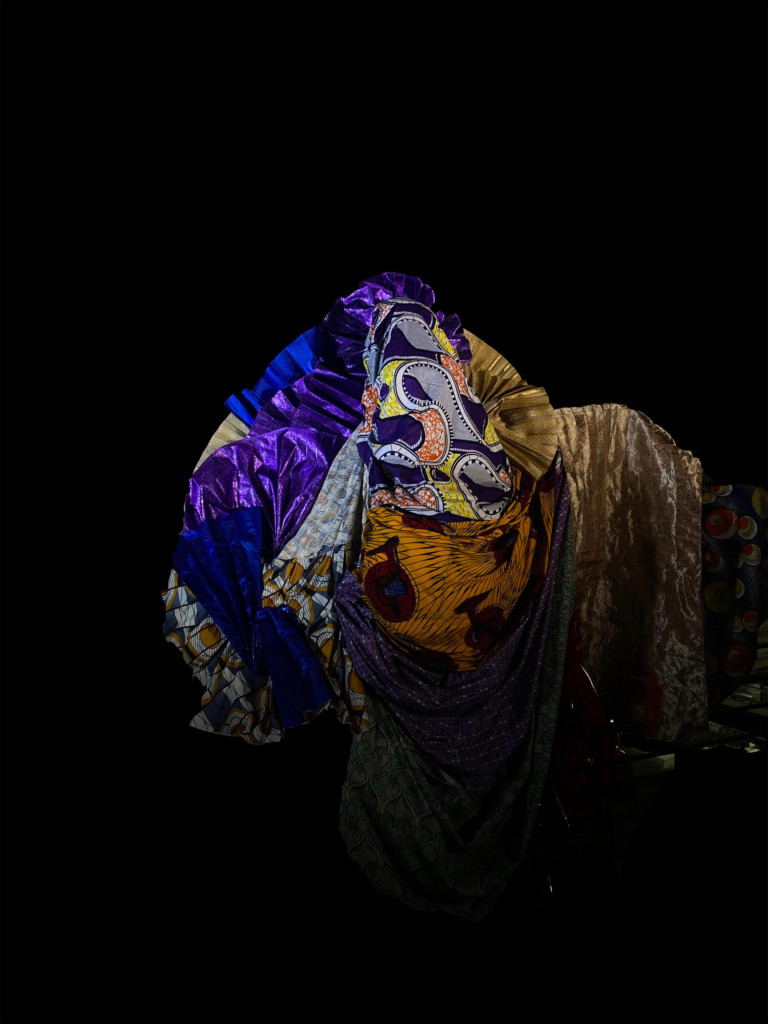
Model from Oluwafemi’s thesis, Mothership. Model labor credits: Kiki Cooper (MLAUD, MDes ’25), Oluwatobiloba Fagbule (MDes ’23), and Sumayyah Raji (MArch I ’23). Photo by Selwyn Quentin Bachus II (MArch II ’22).
Ed Bayes (MDE ’22): Working at the Intersection of Technology, Design, and Policy
Before coming to the GSD, Ed Bayes (MDE ’22) studied law and anthropology and worked in law and public policy in the UK, where he advised the Treasury and the mayor of London on tech, business, and climate policy. Projects included designing the regulatory framework for driverless cars, setting up a “Culture at Risk” office to support grassroots venues at risk of closure, and establishing multibillion-dollar programs to protect the economy from climate and cyber risks. Throughout, Bayes moonlighted as a designer and musician on projects ranging from bands to social enterprises. “I should really have gone to art school,” he jokes. Bayes’s interest in “the intersection between design, engineering, and policy,” as well as a desire to pursue his creative interests full-time, led him to the GSD, where he was supported by a Fulbright scholarship. Once there, Bayes explored how AI could tackle public policy issues, taking graduate seminars in machine learning at the Harvard John A. Paulson School of Engineering and Applied Sciences, and in climate tech at MIT. The relationships he built with other students were crucial. “It’s rare, even in universities, to bring people with such diverse experiences together to experiment, to fail, to think about ideas that you wouldn’t be able to do in the workplace,” he says.I wasn’t a traditional designer . . . but as I worked through the [MDE] program, my idea of what a designer is really expanded.
Ed Bayes
 While Bayes intended to return to the UK and work on Yonder full-time, another collaborative project, from his first semester at the GSD, pushed him in a different direction. In fall 2019, Bayes took Nano Micro Micro, a joint class with the GSD and the School of Engineering and Applied Sciences. Bayes worked with Nick Collins (MDE ’21), Anirban Ghosh (MDE ’21), and Milan Wilborn (PhD candidate in materials science & mechanical engineering) to develop applications for an emerging technology that came out of Harvard’s research labs.
The result was Foresight, which uses soft robotics to develop “a wearable navigation device for people who are blind and visually impaired.” Bayes’s grandmother is legally blind, and he and his collaborators thought there was an opportunity to augment existing navigation aids. “We spoke to my grandmother, as well as organizations around Massachusetts, led by people who are blind and visually impaired, to understand whether we could develop something in the area,” Bayes explains. Foresight uses soft robotics and computer vision to provide haptic feedback for users. “Traditional navigation devices like canes are fantastic but don’t let you know if a branch is overhead or a car drives past. Foresight helps you feel the world around you. If a car goes past, Foresight lets you feel it go past. It’s meant to complement, not replace, the cane,” he says. Foresight won the 2020 Harvard President’s Innovation Challenge and sharpened Bayes’s interest in robotics. He later interned at Everyday Robots, a project born from Google’s “moonshot factory,” known as X.
Bayes is now returning to the company as head of policy, where he will use his policy, design, and engineering background to consider questions ranging from trust and safety concerns to the future of work. He is intent on fostering an interdisciplinary, collaborative environment—values core to the GSD experience as well. “Powerful technologies like AI and robotics have great potential to improve humanity, but it requires a considered approach,” Bayes says. Everyday Robots’s approach includes working with artists-in-residence to choreograph human–robot interactions, as well as philosophers and others. “How can we bring designers, policy makers, union leaders, and philosophers into the product development process from the get-go, rather than as an afterthought?” The goal, according to Bayes, is to “shape technology to pursue positive outcomes.”
Bayes’s experiences have given him a unique perspective. He says, “I’ve worked across a lot of disciplines. I’ve studied law, anthropology, design, and engineering; and worked in policy, tech, and the arts.” When he first came to the GSD, Bayes adds, “I wasn’t a traditional designer . . . but as I worked through the program, my idea of what a designer is really expanded.” For Bayes, “Design is a methodology . . . for imagining a desired future state and helping devise [ways] to get there.”
Read more profiles from the GSD Class of 2022.
While Bayes intended to return to the UK and work on Yonder full-time, another collaborative project, from his first semester at the GSD, pushed him in a different direction. In fall 2019, Bayes took Nano Micro Micro, a joint class with the GSD and the School of Engineering and Applied Sciences. Bayes worked with Nick Collins (MDE ’21), Anirban Ghosh (MDE ’21), and Milan Wilborn (PhD candidate in materials science & mechanical engineering) to develop applications for an emerging technology that came out of Harvard’s research labs.
The result was Foresight, which uses soft robotics to develop “a wearable navigation device for people who are blind and visually impaired.” Bayes’s grandmother is legally blind, and he and his collaborators thought there was an opportunity to augment existing navigation aids. “We spoke to my grandmother, as well as organizations around Massachusetts, led by people who are blind and visually impaired, to understand whether we could develop something in the area,” Bayes explains. Foresight uses soft robotics and computer vision to provide haptic feedback for users. “Traditional navigation devices like canes are fantastic but don’t let you know if a branch is overhead or a car drives past. Foresight helps you feel the world around you. If a car goes past, Foresight lets you feel it go past. It’s meant to complement, not replace, the cane,” he says. Foresight won the 2020 Harvard President’s Innovation Challenge and sharpened Bayes’s interest in robotics. He later interned at Everyday Robots, a project born from Google’s “moonshot factory,” known as X.
Bayes is now returning to the company as head of policy, where he will use his policy, design, and engineering background to consider questions ranging from trust and safety concerns to the future of work. He is intent on fostering an interdisciplinary, collaborative environment—values core to the GSD experience as well. “Powerful technologies like AI and robotics have great potential to improve humanity, but it requires a considered approach,” Bayes says. Everyday Robots’s approach includes working with artists-in-residence to choreograph human–robot interactions, as well as philosophers and others. “How can we bring designers, policy makers, union leaders, and philosophers into the product development process from the get-go, rather than as an afterthought?” The goal, according to Bayes, is to “shape technology to pursue positive outcomes.”
Bayes’s experiences have given him a unique perspective. He says, “I’ve worked across a lot of disciplines. I’ve studied law, anthropology, design, and engineering; and worked in policy, tech, and the arts.” When he first came to the GSD, Bayes adds, “I wasn’t a traditional designer . . . but as I worked through the program, my idea of what a designer is really expanded.” For Bayes, “Design is a methodology . . . for imagining a desired future state and helping devise [ways] to get there.”
Read more profiles from the GSD Class of 2022. Eve Blau among the newly elected members of the American Academy of Arts & Sciences
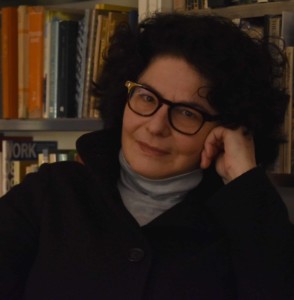
Eve Blau
Dianne Lê (MLA ’22): A First-Generation Student Designs Spaces for Recovery, Resilience, and Community-Building
For Dianne Lê (MLA II ’22), design and research is deeply informed by her background. “[I’m] a daughter of war refugees, a first-generation college student, a first-generation graduate student,” she explains. She sees landscape architecture as a way to help people not just survive, but thrive. Lê studied mechanical engineering at Rutgers before realizing that landscape architecture, which seemed “more community and people–centered,” was a more aligned path. She threw herself into her new discipline, winning a research grant that allowed her to visit Berlin to research the relationship between war, migration, landscape, and the built environment. Toward the end of her studies, her mentors encouraged her to pursue landscape architecture in a different academic environment. A summer at the Design Discovery program solidified her desire to come to the Harvard Graduate School of Design. Lê is focused on how landscape architecture interacts with people’s lives and broader institutional concerns. “People create and give meaning to spaces,” she says. “And the spaces and environments in which we grew up also give us a sense of meaning and understanding of who we are.” Lê’s family background—her paternal grandfather was one of the “boat people” who fled Vietnam, and her maternal grandfather a military officer and prisoner of war for 13 years—has made her attentive to refugee and immigrant experiences of landscape as well. “If we come to terms with [the] reality of international conflict and climate crisis,” she says, “we should always expect these perpetual migration and refugee crises to exist. We can’t not center our design projects around people—that needs to be the starting point.”People create and give meaning to spaces. And the spaces and environments in which we grew up also give us a sense of meaning and understanding of who we are.
Dianne Lê
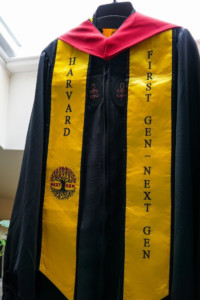
Over 400 stoles (designed by Lê) were ordered by Harvard students for the University’s inaugural First-Gen/Next Gen Graduation Ceremony in 2021. Photo by Steven Gu (MUP ’21).
Sara Arman (MUP ’22): Promoting Health Equity through Community Organizing and Urban Planning
For Sara Arman (MUP ’22), community organizing is essential. When Arman graduated from Tufts with a bachelor in international relations and Middle Eastern studies, she began working with the Women and Public Policy Program at the Harvard Kennedy School. At the same time, she says, “I was looking for ways to get involved with community organizing outside of my work.” Through Arman’s involvement in the Chelsea, Massachusetts, planning board, she heard a number of proposals for urban development and housing projects. Her interest in the field, as well as a conversation with the director of a local housing nonprofit, led her to pursue urban planning at the Harvard Graduate School of Design. During her studies, Arman also worked as the health equity corps coordinator for GreenRoots, an environmental justice organization in Chelsea, a small, densely populated city with a large low-income immigrant population. It is also her hometown. When she was in high school, GreenRoots helped Arman receive a discounted youth transit pass. She says, “GreenRoots first helped me think about transit through a lens of equity and justice. Providing youth with safe and affordable transit is essential in a dense urban community like Chelsea.”[The] beautiful part of doing community organizing where you grew up is being able to rely on the relationships that you already have.
Sara Arman
The GSD’s Early Design Education Programs: An Interview with Megan Panzano
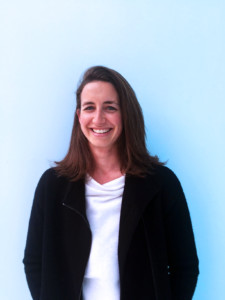
Megan Panzano
In 2021, the Harvard Graduate School of Design invested in a set of short introductory education programs that are directed at sharing the value of design with the global public. Early Design Education (EDE)—which invites different audiences to “think and make” through design—includes Design Discovery Virtual, Design Discovery in-person, and Design Discovery Youth summer programs; the Black in Design Mentorship program; and the Harvard Undergraduate Architecture Studies program.
Last June, Megan Panzano was named senior director of Early Design Education to lead these programs in refreshed formats into the future. Harvard GSD’s Joshua Machat talks with Panzano about her plans for the EDE programs that include breaking down access barriers to design education, engaging diverse perspectives on what should drive design, and building a robust support system for students and those new to teaching design.
The Early Design Education programs introduce design ideas and practices to a wide range of audiences on a global scale. What are the methodologies students will be engaged with concerning the impact of design on the built environment and its potential for societal change?
The programs offer a great chance to share the value of design with an expanded public, and reciprocally, to include and value the voices that a diverse public brings to design. We’re invested in these programs bringing new forms of design agency to the individual ideas and perspectives of our global participants. And we’re working on making these programs as accessible to as many people as possible.
The “early” part of Early Design Education is not an age-dependent term. Rather it assumes that each program is one of the earliest experiences of design immersion and “thinking through making” that participants—ranging from mid-career professionals to high school students—have encountered. These programs aim to offer thoughtful instruction in the materials and scale of design across architecture, landscape architecture, and urban planning and design; workshops in tools used for design, such as 3D modeling and graphics programs; and, most critically, how to think about the world through a design lens.
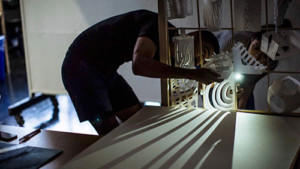
Harvard GSD Design Discovery Youth
The programs emphasize design as a method for asking important questions. The world is, and will continue to be, unavoidably instable—environmentally, politically, and socially. Our crafting of the Early Design Education programs accepts and claims that instability as a material of design. Rather than seeking a singular “right” answer or achieving a prescribed outcome, the programs teach how to use design to keep up with this evolution—to continuously question the world as we’ve come to know it. This happens by closely reading our context, seeing something that could be improved, naming it as a question, and directing design to impact it.
How has remote learning in the past two years impacted the EDE programs?
The required remote learning of the past two years has taught us many things, not all good. But there a few wonderful takeaways that we intend to hang onto. These positive qualities made it possible for us to conceive of a new format for our summer program, Design Discovery Virtual, which we will offer along with a refreshed version of our Design Discovery in-person program this summer and going forward. What’s been great is that now we have the chance to be intentional with constructing a virtual design education program, rather than simply reacting out of necessity of pandemic pressures.
We can easily bring diverse groups of people together from anywhere in the world to discuss design. That range of perspectives is incredible in conversation and as a way to expand one’s thinking. Within the context of our new virtual program, we note that peer-to-peer learning occurs as much as more conventional top-down organizations of learning from instructors.
Our virtual mode these past years has allowed us to learn and become quite good with programs, such as Miro and Slack, that make it easier to share work—both in-process as well as more polished—to collectively see and record design steps. Miro’s open virtual pin-up space visually collects elements in design processes and in works in progress such as drawings, 3D model images, design precedents and texts, and puts these on an equal plane with more complete finished final work for all members of a design studio. Because you can see your own design evolution beside those of your classmates, the program visually maps different learning paths along with design outcomes, a kind of meta level learning about learning. It’s a wonderfully powerful tool for those new to design.
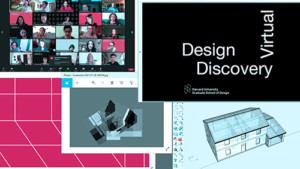
Harvard GSD Design Discovery Virtual
Sharing our ideas via virtual platforms requires us to be more clear and intentional with an argument and a narrative for our design work when presenting. As opposed to more conventional academic design presentations where a field of visual and modeled work would be pinned up and shown all at once to an audience, digital programs tend toward linearity of flipping through a presentation one slide after the next.
How do you see students in the Harvard Undergraduate Architecture Studies program benefiting from the interdisciplinary approach that teaches design “thinking through making” within the liberal arts context?
The Harvard Undergraduate Architecture Studies program is a special one within the EDE set because it is a joint endeavor between two schools at Harvard—the Faculty of Arts and Sciences and the Graduate School of Design. It’s a track of study within the history of art and architecture concentration, or major, at Harvard. The GSD has created and teaches four making-based courses annually as part of this degree of study. These courses draw architecture studies concentrators, but are also in high demand with computer science, engineering, history, and visual studies students. We teach architecture to undergraduates, not with the expectation that everyone will become a designer, but with the goal that those coming through our courses who go on to shape the world in any number of ways afterward, will do so with a true understanding of the value of design.
What new offerings are available in the undergraduate Architectural Studies program for students seeking more experience in design education?
I’m looking forward to launching a new version of a course that went on hold for the past two years: a lecture/workshop class next fall for Harvard College students on climate change, through design. The course will explore how material selection and construction practices could radically shift if driven by more sensitive and careful environmental concerns. The course will also study the formal and spatial outcomes of using entirely new building materials and assembly techniques.
It’s been a pleasure to have the support and enthusiasm of my colleagues in the History of Art and Architecture Department, David Roxburgh and Jennifer Roberts, to develop a process for students wishing to pursue a design thesis in their senior year at Harvard College. Going forward, this will be an honors-eligible option each year for our Harvard Architecture Studies students. I’m looking forward to working with more undergraduates pursuing design research on topics they are passionate about as an additional path of studying the impact of design on the important issues of today.
The EDE programs place a lot of emphasis on supporting design teaching opportunities for the current advanced students of the GSD. What are these opportunities and what structures are in place to develop teaching skills in design across all three disciplines?
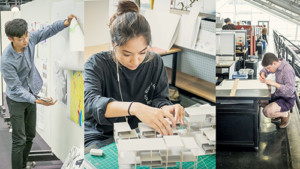
Harvard GSD Design Discovery
All of our EDE programs intentionally involve advanced GSD students as design instructors so that our current graduate students can gain design teaching experience, across all disciplines. We’ve been making some adjustments so that the programs in the EDE set call upon our GSD students to engage a different audience through different educational formats, and with varying degrees of agency to shape the design curriculum of the program. The intention is that the EDE programs provide a spectrum of design teaching experience that could build up if followed in sequence by current GSD students to help bridge them to post-degree academic positions. Our Design Discovery summer program, which has been around for more than 20 years, has a great track record of launching teaching careers in complement to design practice.
The Black in Design Mentorship program is rooted in the recognition that everyone benefits from mentorship, but not everyone has equal access due to racial inequalities and histories of disenfranchisement. What do you see as the most important factor in diversifying the design profession?
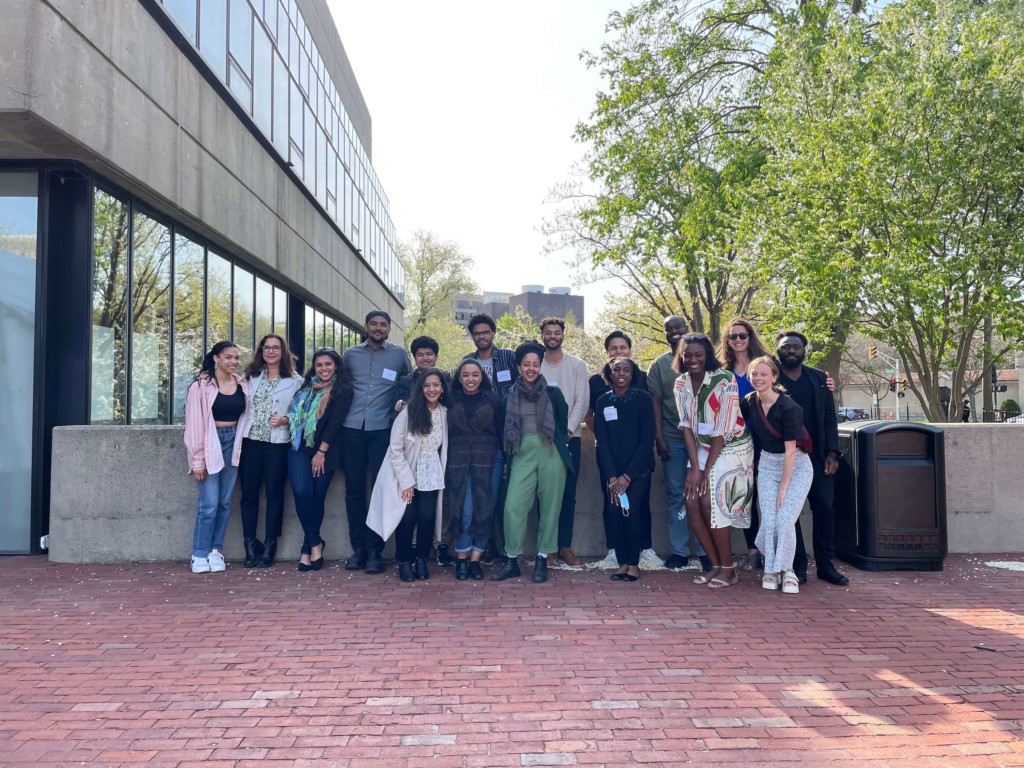
Members of the Black in Design Mentorship Class of 2022 visited Gund Hall in May to tour the building and celebrate the end of the program.
Recognizing and reevaluating what has been established, consciously and unconsciously, as “gate-keepers” to design is most pressing. This includes representation—seeing others like you in design and being able to project a path for yourself like theirs; affordability—considering the cost and time necessary for design education and professional licensure; geography—connecting design and its capacity to change the world as we’ve come to know it to the full range of global cultural heritages; and a sensitivity to the language we use to talk about design. If our profession is not appearing accessible to a diverse audience, one or more of those things are critically off. The design profession should be as diverse as the world we design within and for.
I’m honored to be working with a team of staff, students, and faculty who value these factors within the fields of design: Jenny French, Montserrat Bonvehi Rosich, Yun Fu, Kelly Wisnaskas, Ian Miley, Tosin Odugbemi, Rania Karamallah, Caleb Negash, Shaka Dendy, K. Michael Hays, and Sarah Whiting. Dean Whiting’s investment in Early Design Education has been critical in supporting the exciting plans we have to broaden design’s reach.
Inventing Greenland by Bert De Jonghe Examines the Urban Transformation of an Arctic Nation
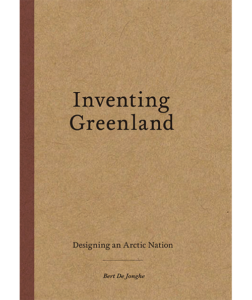 A new book by doctor of design candidate Bert De Jonghe (MDes ’21), Inventing Greenland: Designing an Arctic Nation (Actar, 2022), examines the intense transformation of Greenland through the lens of urbanization. The book is based on De Jonghe’s MDes thesis at the Harvard Graduate School of Design, which was advised by Professor of Landscape Architecture Charles Waldheim, who also wrote the book’s foreword.
Inventing Greenland explores Greenland’s cultural, social, and environmental realities and recognizes an array of relationships supported and produced by the built environment. Aimed at architects, landscape designers, and urban planners, it draws attention to the island’s emerging opportunities and ongoing challenges. “By exploring Greenland as a complex and interconnected cultural and geographical space, Inventing Greenland reveals and anticipates transitional moments in the region’s highly intertwined urbanized, militarized, and touristic landscapes,” according to the publisher.
A new book by doctor of design candidate Bert De Jonghe (MDes ’21), Inventing Greenland: Designing an Arctic Nation (Actar, 2022), examines the intense transformation of Greenland through the lens of urbanization. The book is based on De Jonghe’s MDes thesis at the Harvard Graduate School of Design, which was advised by Professor of Landscape Architecture Charles Waldheim, who also wrote the book’s foreword.
Inventing Greenland explores Greenland’s cultural, social, and environmental realities and recognizes an array of relationships supported and produced by the built environment. Aimed at architects, landscape designers, and urban planners, it draws attention to the island’s emerging opportunities and ongoing challenges. “By exploring Greenland as a complex and interconnected cultural and geographical space, Inventing Greenland reveals and anticipates transitional moments in the region’s highly intertwined urbanized, militarized, and touristic landscapes,” according to the publisher.
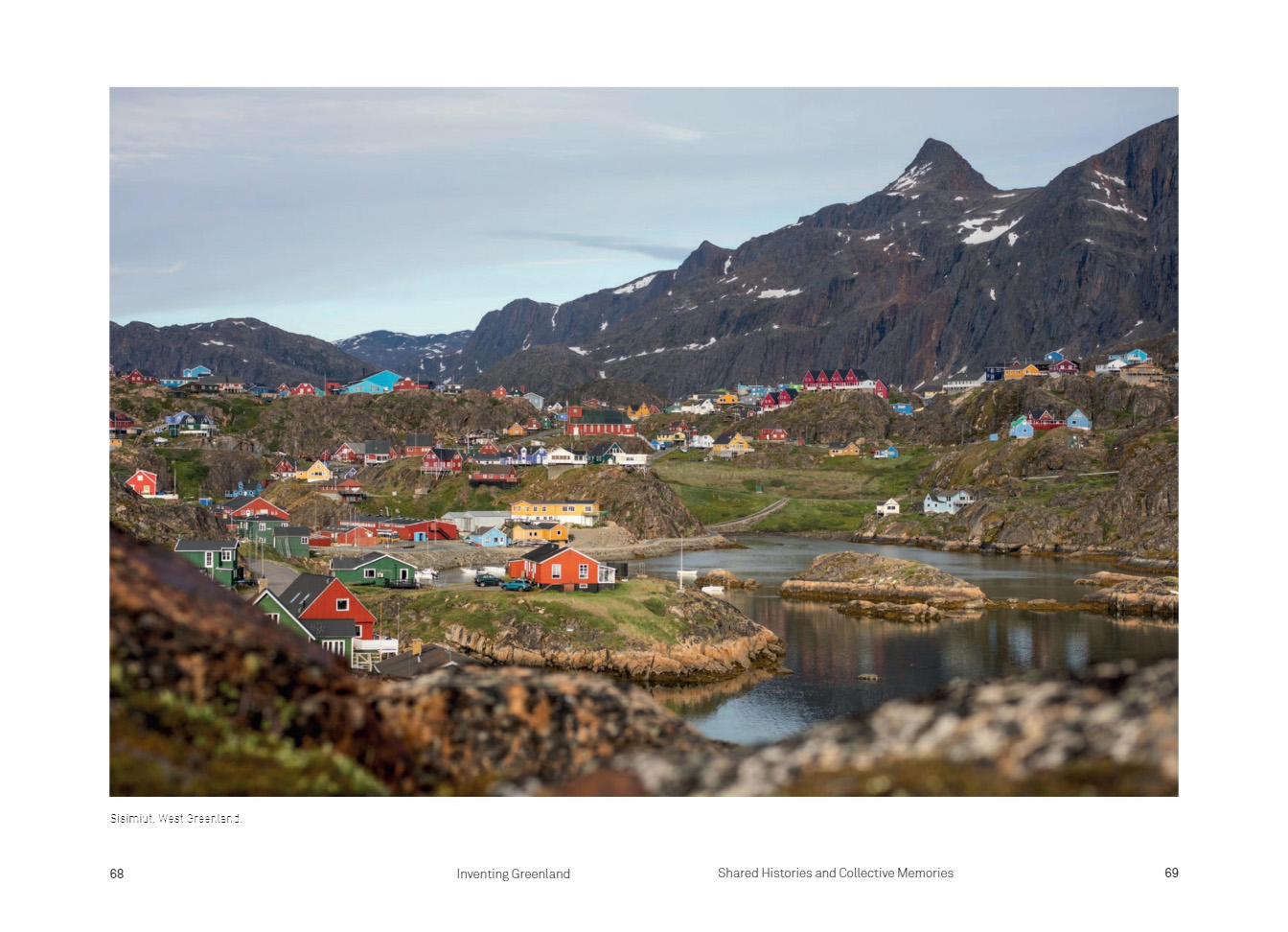 As a first-year DDes student, De Jonghe has been investigating the Arctic urbanization of Russia while drawing attention to emerging influences and ambitions of the “near-Arctic state,” China. Before studying at the GSD, De Jonghe worked as a landscape architect in Belgium, South Africa, and Norway. He is also the founder of Transpolar Studio, a spatial design practice specializing in landscape architecture, urbanism, and design research in the Arctic and subarctic regions.
As a first-year DDes student, De Jonghe has been investigating the Arctic urbanization of Russia while drawing attention to emerging influences and ambitions of the “near-Arctic state,” China. Before studying at the GSD, De Jonghe worked as a landscape architect in Belgium, South Africa, and Norway. He is also the founder of Transpolar Studio, a spatial design practice specializing in landscape architecture, urbanism, and design research in the Arctic and subarctic regions.
A Call to Action: Just City Mayoral Fellows Discuss Design Interventions to Address Racial Injustice in America
“Everything we do at the GSD,” Dean Sarah Whiting said, “is affected by or affects cities.” On Friday, April 22, the GSD hosted the concluding event of the 2022 Just City Mayoral Fellowship, a collaboration between the Mayors Institute on City Design (MICD) and the Harvard GSD’s Just City Lab, supported by the National Endowment for the Arts (NEA). The event brought seven mayors together for a discussion on how design and planning interventions can promote racial and infrastructural justice. In her opening remarks, Dr. Maria Rosario Jackson, the chair of the NEA and the first urban planner to hold the role, said: “It’s in this kind of forum that one can see the critically important role that arts, culture, creativity, and design have in advancing healthy communities and cities.” Trinity Simons, the executive director of the MICD, shared the MICD’s ambition to “equip mayors to be the chief urban designers of their cities.” She said that following George Floyd’s murder in 2020, “We saw mayors asking: What does it mean to achieve racial justice in the built environment?” To address this, Simons reached out to Toni L. Griffin, the founder of the Just City Lab and a professor in practice of urban planning at the GSD. Now in its second year, the fellowship involves an 11-week curriculum of “readings, lectures, and open and honest discussion.” Mayors also proposed projects for their city, with design and development professionals performing “design jury duty” to share their expertise and feedback.Just Cities, Infrastructures, and Community Building
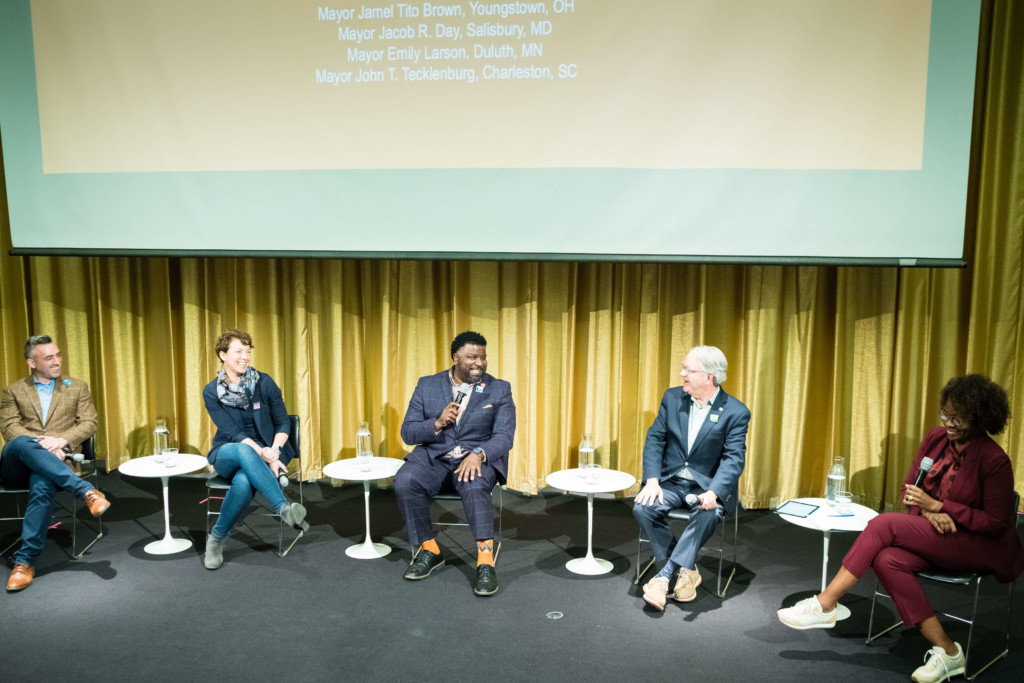
From left to right: Mayor Jacob R. Day, Mayor Emily Larson, Mayor Jamel Tito Brown, Mayor John T. Tecklenburg, and host Professor Toni L. Griffin.
It’s in this kind of forum that one can see the critically important role that arts, culture, creativity, and design have in advancing healthy communities and cities.
Dr. Maria Rosario Jackson
Just Cities, Infrastructures, and the College Town
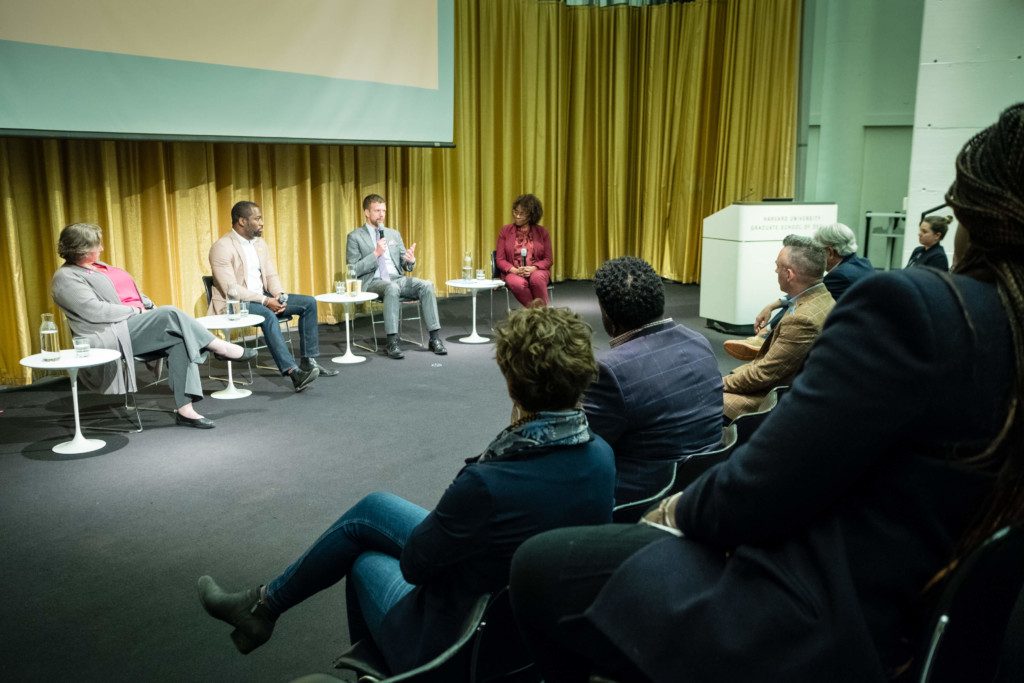
From left to right: Mayor Satya Rhodes-Conway, Mayor Levar M. Stoney, Mayor Patrick L. Wojahn, and host Professor Toni L. Griffin.
A Call to Action
Community, justice, repair, and investment: these themes were central to how all seven mayors spoke of their cities. Their commitment reflects a quote from 2019 Loeb Fellow and former Vancouver City Council member Andrea Reimer that Griffin shared with the audience: “We may all have an identity that demands justice, but we also have an identity that demands participating in justice for others.” Griffin said, “This is the call to action that each of us can step into [and that] has motivated the mayors to be here.” Watch a recording of the event.Designing With and Not Just For People with Atypical Bodies and Minds
We live in a world designed under a highly constrained idea of what is normal. Disability often falls outside of this rigid definition. We are taught to provide help—rather than human rights—for people with disabilities, and rarely realize that the civil rights issue of disability is intrinsically connected to the design of the built world. Sara Hendren is a polymath who has devoted her career to changing the narrative around disability by upholding the idea that it is not only normal but, in fact, part of the human experience. She is an artist, design researcher, writer, and professor at Olin College of Engineering. Her work has been exhibited around the world and is held in permanent collections at MOMA and the Cooper Hewitt. The author of the highly acclaimed What Can a Body Do? How We Meet the Built World, Hendren is a fellow at the New America think tank, where she’s focused on investigating the future of work for adults with cognitive and developmental disabilities. This semester, Hendren, a 2013 graduate of the Harvard Graduate School of Design’s Master in Design Studies program, is at the GSD’s Department of Architecture leading the project-based seminar “Investigating Normal: Assistive and Adaptive Design for Interdependent Futures.” Conceived as a deep dive into disability studies, the course seeks to introduce students to design “by, with, and for people with atypical bodies and minds.”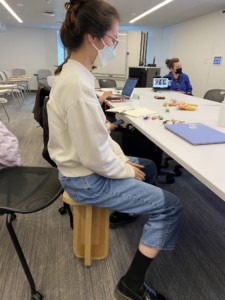
A student tests out one of Adaptive Design’s popular furniture designs—a “tippy stool” made of three-wall cardboard and with rounded edges at the feet to allow for movement while sitting.
If disability is somewhere between what’s happening to your body and the inherited state of the built world, where do designers do their best work?
Sara Hendren
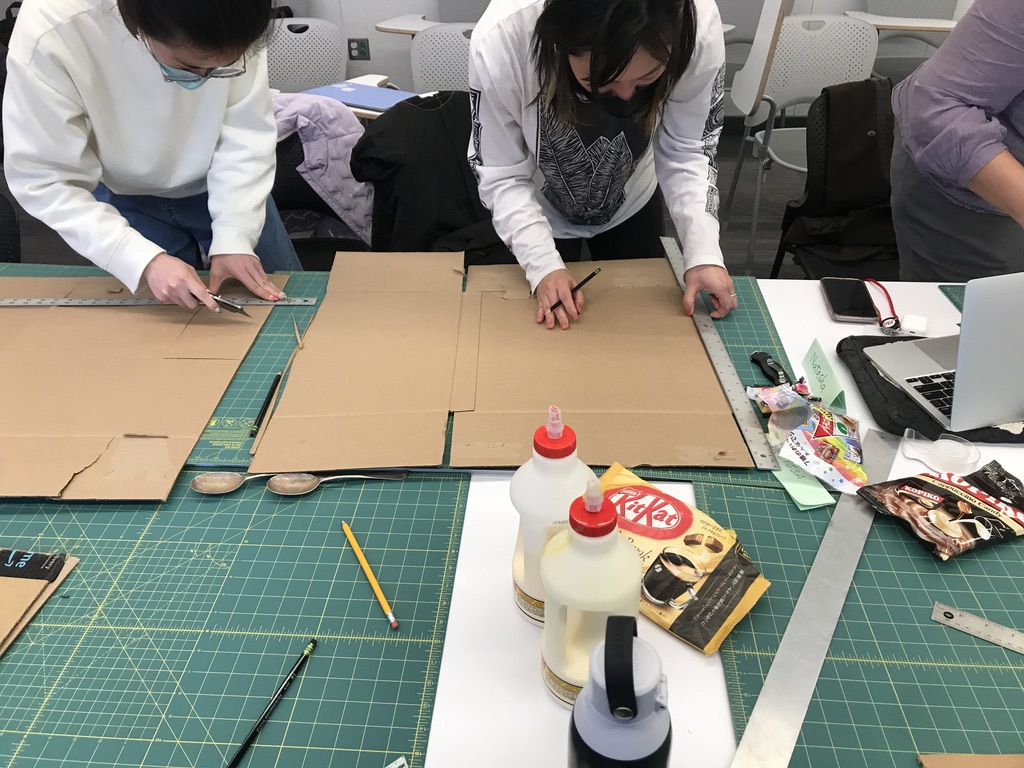
Students in Hendren’s class use cutting boards, utility knives, wood glue, and cardboard to make a simple box as part of Adaptive Design’s workshop—getting familiar with the properties of cardboard.
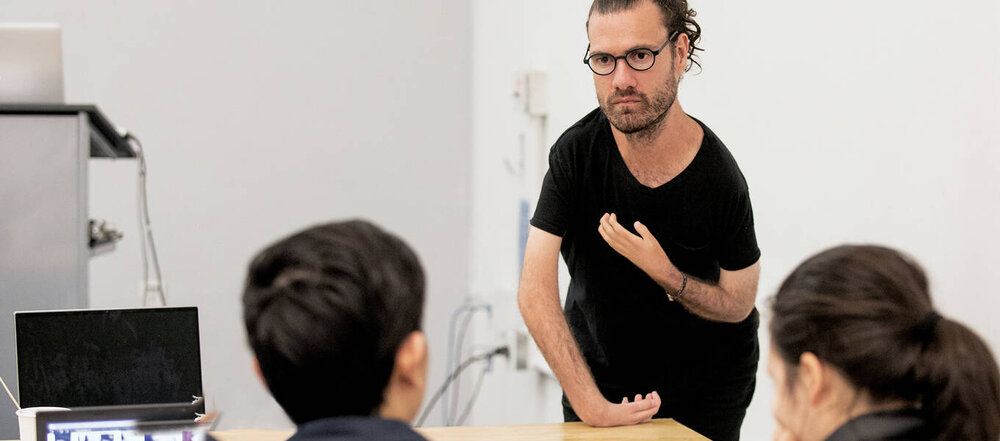
Designer Joshua Halstead, one of four guest lecturers in Hendren’s course, leads one of his own courses in graphic and UX design.

